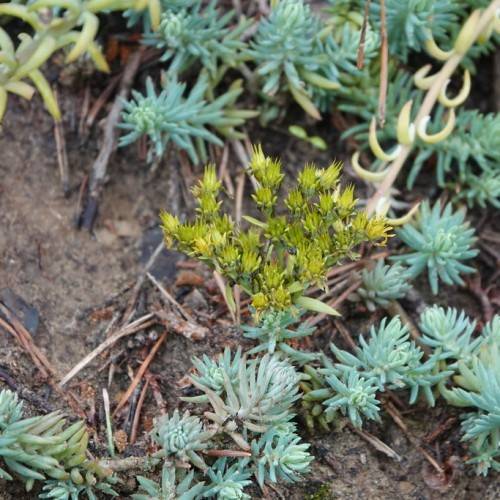
stonecrop
Sedum rupestre
Cycle:
Herbaceous Perennial
Watering:
Minimum
Hardiness Zone:
5 - 8
Flowers:
Flowers In Summer
Sun:
Full sun
Soil:
Rocky , gravelly , dry, Well-drained
Fruits:
Fruits In Autumn Ready In Fall
Leaf:
Yes
Growth Rate:
High
Maintenance:
Low
Drought Tolerant:
Yes
Salt Tolerant:
Yes
Thorny:
Yes
Care Level:
Low
watering
Stonecrop (Sedum rupestre) requires very little water and can tolerate hot, dry, sunny conditions. When first planted, water just to keep the soil moist until it begins to take hold. Once established, water sparingly - around once every week to 10 days during summer and every 2-3 weeks in winter - or simply when the soil begins to feel dry. When watering, water deeply. Soak the soil thoroughly and allow to drain before replacing the pot in its usual position. Additionally, it's a good idea to provide some shade during the hottest part of the day.
sunlight
Stonecrop (Sedum rupestre) is a succulent species that prefers full sun or partial shade. It requires at least 6 hours of direct sunlight each day during the growing season, which should be provided in the morning or late afternoon. When providing light for this plant, it should be relatively even throughout the day and not too harsh, as to not cause scorching or sunburns. During the winter months, when the days are shorter and the sun is at a lower angle, the plant will require less light and may be able to tolerate even partial shade.
pruning
Pruning stonecrop plants (Sedum rupestre) is necessary to keep the plants healthy and vigorous. Pruning should generally be done once a year, in late spring or early summer. The best time for pruning is just after the plant has finished blooming. To prune, cut off the dead or damaged stems first, then remove any other stems or branches that are crossing over each other and crowding the center of the plant. Pruning can also be done to encourage new growth or to shape the plant. Be sure to use clean, sharp pruning tools to avoid damaging the plant.
